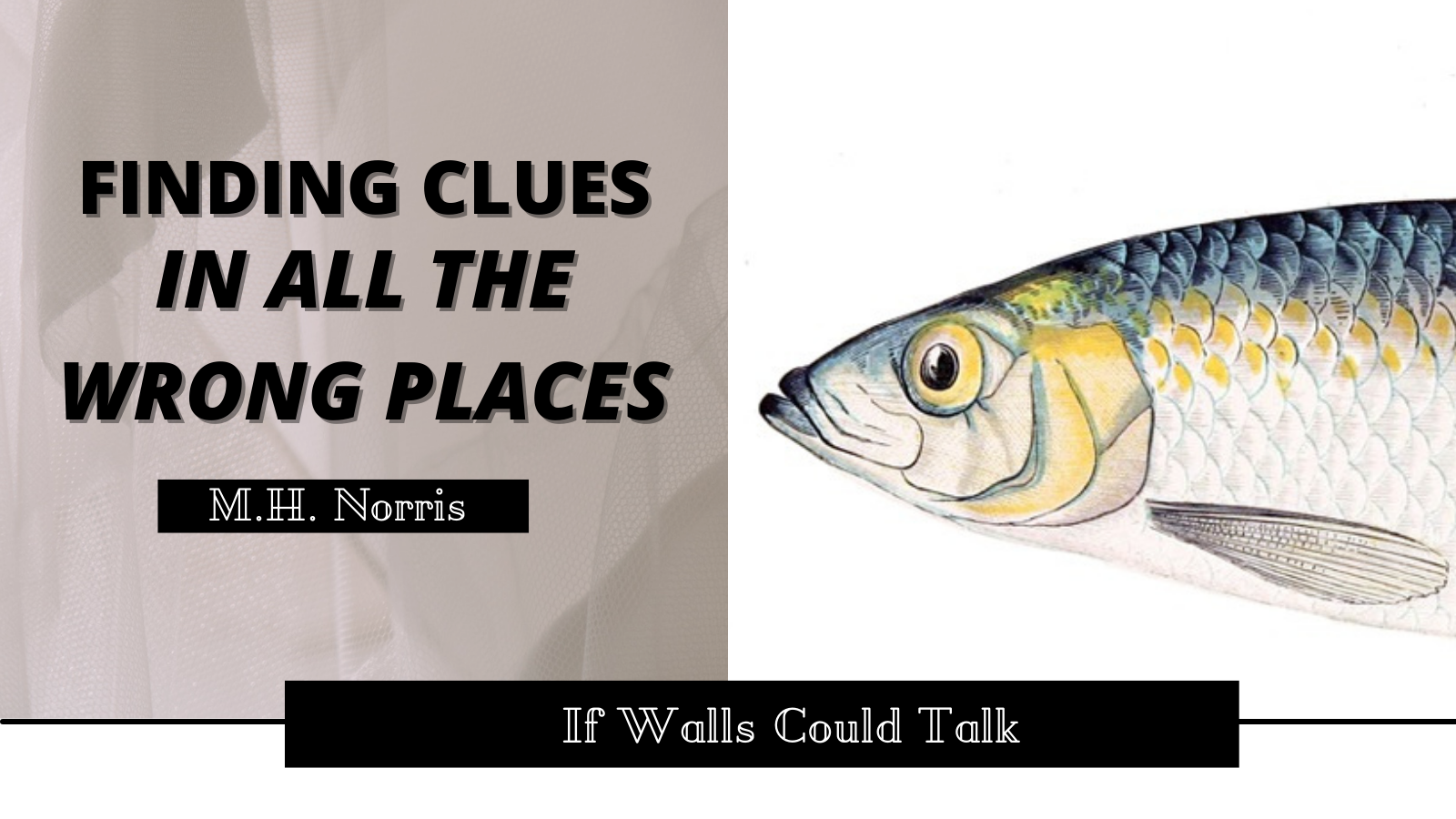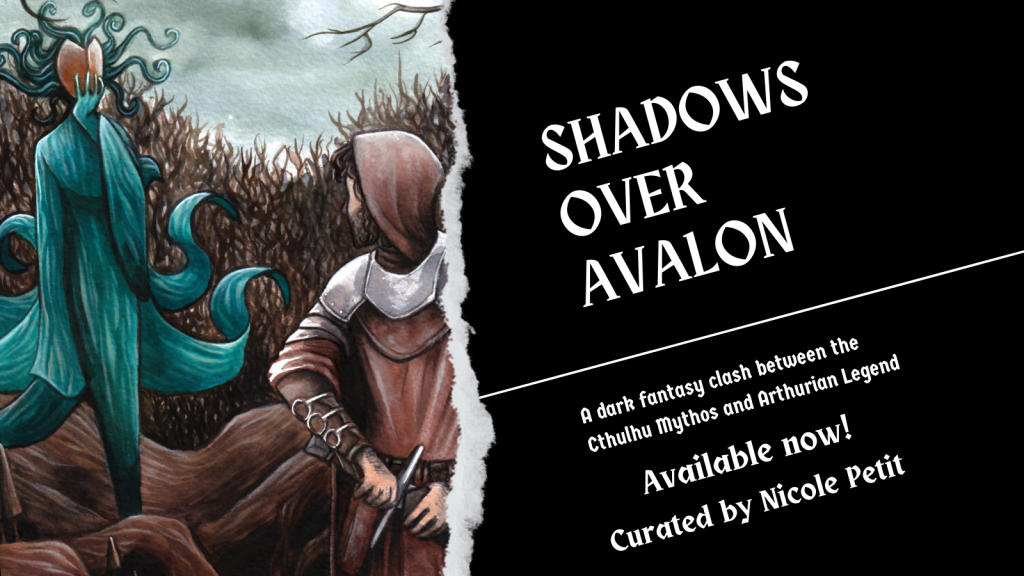
If Walls Could Talk: Finding Clues in All the Wrong Places – Red Herrings
Can I confess something to y’all?
I suck at Red Herrings.
There’s something about leading a false trail only to reveal the proper path, to drop breadcrumbs for readers to follow, that eludes me as a writer. To me, it’s one of my biggest shortcomings as a mystery writer.
This week, I read a book that had not one but two Red Herrings. Both had me so focused on them, that when I found out what actually happened, it blew my mind.
I
Did
Not
See
It
Coming
But before I dive into how this book delivered some of the best Red Herrings I’ve ever seen, let me do a dive into what exactly a Red Herring is. I dug into the phrase, because to me it’s a staple of the mystery genre and I’ve known what it means for years (even if I suck at making them).
Apparently, the phrase comes from a story told by William Cobbett in the early 1800s, where he claimed he drove a red herring across an area to distract hunting dogs. Of course, the scent of fish would overpower whatever they were trained on and they’d follow it instead, distracted from the hunt.
In a mystery, a red herring is the phrase that refers to the act of an author intentionally feeding you something that gets you to look away from who did it. Sometimes it’s a false suspect, sometimes it’s conflicting stories, sometimes it’s a series of odd coincidences.
Cemetery Dance (and Spoilers)
One of my absolute favorite examples of how to use a Red Herring comes from a book I just finished on Monday, Cemetery Dance by Douglas Preston and Lincoln Child. It is the ninth book in the Pendergast Series.
I started reading this series last year but picked it up in earnest this year, plowing through eight (nine counting the one I’m on now).
The series has reinvigorated my love of the genre and has helped to fill my drained creative juices.
Let’s focus on Cemetery Dance, though. Since it came out in 2009, I don’t feel an overwhelming need to put a spoiler warning here, but in case you were thinking of reading them, spoiler alert.
We open the book with the murder of Bill Smithback. He was a reporter for the New York Times and had appeared in numerous other books in the series. Police had both witness and video identification of the killer. The problem was, the killer had been declared dead two weeks before.
Throughout the book, we are exploring what happened to Smithback.
The obvious lead to follow is looking at Smithback’s stories and see if he had made any enemies with recent stories. This led them to Lucas Kline. He had written a letter that said, “I promise that, no matter how much time it takes or how much it costs, you will regret having written that article.” As a wealthy tech CEO who has a motive and the means, he looks like a likely suspect. Of course, he uses his wealth to make the lives of Lead Detective Vincent D’Agosta and people around him a hair miserable.
Another lead is a series of stories about animal sacrifice. Smithback was investigating a place in Northern Manhattan called The Ville. He’d interviewed a former movie director and an elderly woman who lived in one of the closest buildings to The Ville. All signs begin to point to The Ville, which hosts a cult. New York believes these people are creating zombies that kill people. It doesn’t help when another journalist gets killed supposedly by Smithback.
The first clue we get that The Ville may not be behind this is when Nora Kelly (Smithback’s wife) gets kidnapped in the back half of the book. She describes her surroundings but includes that the floor smells of freshly poured cement.
That set off bells in my head that The Ville might be a Red Herring. But I couldn’t quite figure out what the smokescreen of that storyline was hiding. Part of me questioned if Kline was behind it somehow and was blaming The Ville. But there was still the “zombies” to explain and I couldn’t quite reconcile all of it. Kline seemed to have dropped off and tensions towards The Ville were growing. But then there was that fresh cement smell. Especially once Pendergast and D’Agosta went into the basement of The Ville, you could tell Kelly wasn’t there. In the end, it turns out that the Esteban, the director they’d spoken to earlier, was behind it all.
And for what?
Money, of course.
Turns out, his ancestor had owned around 200 acres in what was now Midtown Manhattan. The settling on the lawsuit would have been worth billions. But the will with the proof was in The Ville and Esteban arranged a riot there as a smokescreen to sneak in and out and get his prize.
When Preston and Child had Pendergast break this all down in Agatha Christie-style at the end, I was in shock. The writing duo had me fooled by all the red herrings.
Let’s look at some insights I’ve gained while trying to improve my ability to write Red Herrings.
1) Follow Through
What made this work so well was the thought and attention to detail (more on that in a later post) they gave to both threads.
Cline got his due in the end. The FBI was taking him down for a bribery scheme. While he’d served his purpose, Preston and Child made sure there was an end to that story.
This is something I struggle with. It’s partially because I write very sparsely (I’ve come a long way on that, though). I zero in on the story and forget to write in Red Herrings.
Seeing these examples of following through with Red Herrings has given me inspiration.
2) Make them Convincing
This is one of the reasons I had been struggling with Jazz Street. In my desire to include multiple suspects and to find a way to create smokescreens, I don’t develop each them enough. They were very shallow and one dimensional.
The best mystery writers make sure Red Herrings are an integral part of the story, that their presence in the story has a reason even if they aren’t directly responsible for the crime.
I’m excited to see how this draft of Jazz Street develops having studied how Preston and Child write. I do highly recommend the Pendergast series if you’re looking for a good mystery to read.
But I’d love for y’all to share with me your favorite mystery authors or your favorite red herrings!





